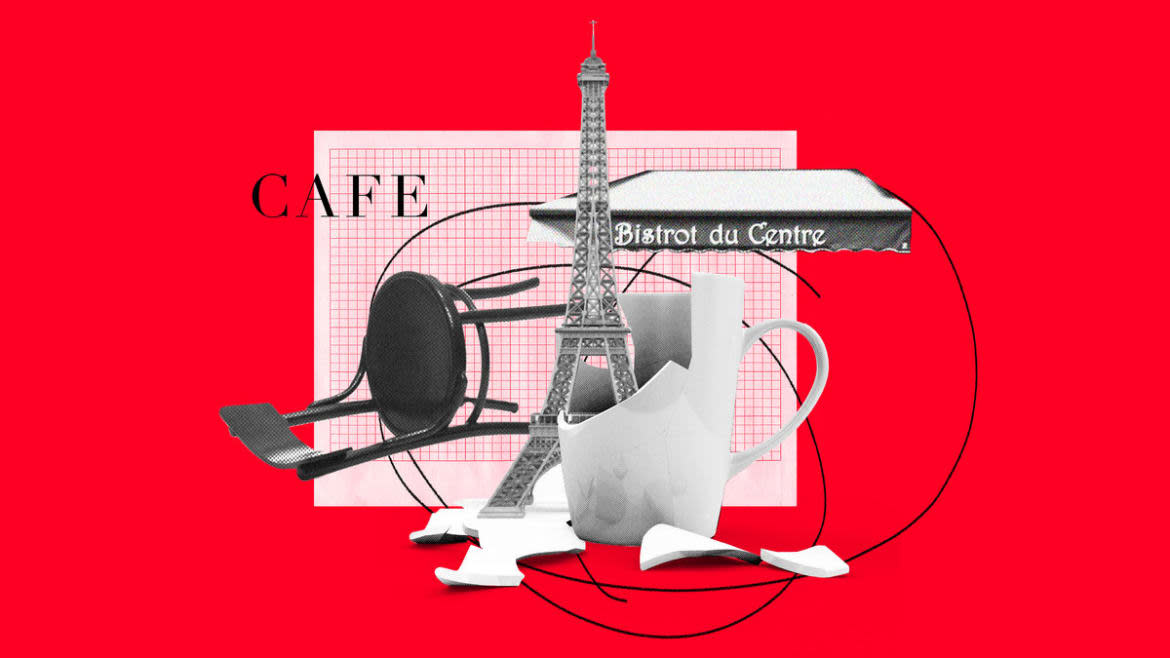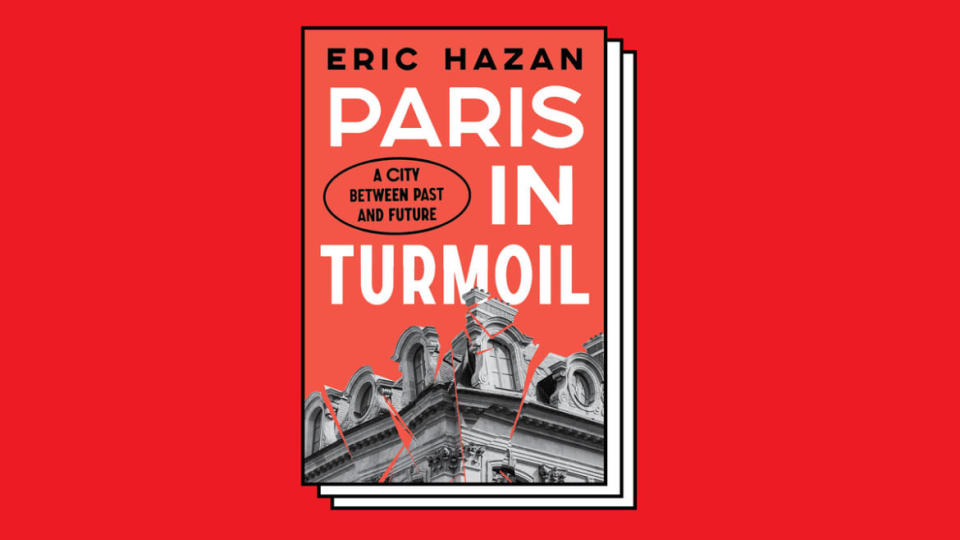In Paris, ‘Trendy’ Millennials Have Laid Siege to an Icon

In Paris you can rapidly quench a sudden thirst. At any time of the day, even late at night, you are sure to find a bistro, a bar, a café without going very far. Unless you have wandered into one of the few neighborhoods deprived in this respect, around the government buildings or on one of the long deserted avenues of the sixteenth arrondissement. This is a notable difference from New York, Berlin or London, where the pub, a magnificent institution, involves a certain ceremony, a slow process that has nothing to do with the little black coffee quickly consumed on the counter.
Because what defines a real café is the existence of a counter. Establishments that lack one – whether they never had one or, worse, removed it – can claim the name café but don’t deserve it. At the Café de la Paix on Place de l’Opéra, Chez Francis on Place de l’Alma or Les Deux Magots on Place Saint-Germain- des-Prés, you can certainly order a coffee, but the absence of a counter (as well as the style of the waiters) makes it impossible to confuse it with a real Parisian café.
Over the last dozen years or so, there has been a change in the ordinary café, the place where mothers returning from the crèche meet in the morning and friends meet for an apéritif in the evening. Previously, this would often have been an establishment run by a Kabyle owner who served all by himself – at the bar, in the saloon, or on the terrace if there was one. Sometimes he was assisted by a young man, a recently arrived cousin, but the owner was more Parisian, more “from the neighborhood” than many natives of the capital. There are still many such cafés, especially in working-class districts and the banlieues, but, in the city center, they are increasingly rare. What we find today are cafés that do not limit themselves to “la limonade” (the word used in the trade to designate the serving of drinks) but also offer cooked dishes at lunchtime. That’s certainly better than being overwhelmed by chains such as McDonald or Subway, but the drawback is that, from 11 o’clock onwards, the tables are set – napkins and cutlery – and it is not always easy to find a table just for a coffee. The most pleasant establishments reserve a few in the corner. Bottles of apéritifs or digestifs dating from the 1930s, Suze, Picon, Lillet, Fernet Branca – the usual décor – are still there behind the counter, but the view is blurred by the display of “formules’ – a word which has replaced the old ‘menu’ – and the indication of “Happy Hours” where the price of a pint of beer is reduced (an English measure formerly unknown in Paris cafés). In Milan or Rome, where coffee and food are better than in Paris, the boundary is maintained between places where you savor a bitter drink standing up, possibly eating a hard-boiled egg, and the trattoria that serves lunch.

Some Paris cafés are said to be “trendy,” without the word being clearly defined. These are not the most chic; the level of elegance is not an issue here. What makes a café trendy is not the décor or the price of drinks, but the clientele. Until recently, there was a textbook case where Rue Desnoyers joins Rue de Belleville: two cafés facing each other. On the left Aux Folies still stands, a café that has been very trendy for at least fifteen years, where the customers are almost all under thirty and mostly white, which makes a striking contrast in one of the most multicolored streets in Paris. Among them are young men and women without jobs, others who earn their living in a more or less artistic profession – design, architecture, cinema, photography – others again who are foreigners, mostly Americans, living in the neighborhood or passing through. The few Blacks and Arabs are scattered, rarely in groups, and Chinese are rare in this establishment established in the heart of Chinatown, which has long occupied the lower part of Rue de Belleville. The drink is almost exclusively beer, and the people in groups: it is rare to see an isolated person reading the newspaper in a corner. Both sexes are dressed, coiffed and shod in a very coded way, varying according to the seasons, which makes for a homogeneous population whose members bear a striking resemblance to one another. To a benevolent eye, this is a group of young people having fun together; alternatively, it is an assembly of clones that can be found with a few variations in all the cafés of the same kind.
Opposite, the Vieux Saumur was (in the past tense, because it was demolished when the adjoining segment of Rue Desnoyers was destroyed by the Paris town hall) an old-fashioned café: fewer people, less noise, old people from the neighborhood, Arab workers, isolated customers or couples. Encounters there were peaceful, you could read quietly and even write. There might have been a jukebox or a pinball machine there, just like in the old days. It was a haven like many that still exist today – for as long as they last.
Trendy cafés don’t spring up just anywhere. They proliferate in working-class neighborhoods (with a high population of immigrant origin) that are in the process of gentrification. There is often an initial trigger – for example, the Café Charbon on Rue Oberkampf, an old shop transformed in the 1990s, which launched “trendiness” in its street and the surrounding micro neighborhood. Areas around markets, where the population is more mixed than elsewhere, are also conducive to the blossoming of trendy cafés, as in Aligre or the Kurdish stronghold at the beginning of Rue du Faubourg Saint-Denis, or more recently around the pretty Marché de l’Olive in the north of the eighteenth arrondissement.
The Parisian café has long been a literary and artistic setting. For Diderot and Balzac, Breton and Miller, Manet and Brassaï, the café was much more than just a backdrop: it illuminated its denizens’ physique and soul. Groups were founded in cafés, such as COBRA in 1948 in the café of the Hôtel Notre-Dame, on the corner of Rue Saint-Jacques and Quai Saint-Michel. For the surrealists and the Situationist International, the rhythms of their lives were marked by encounters in cafés. And then, around the time the laptop appeared (without any clear causal link), this tropism, whose origins go back to the literary cafés of the nineteenth century, unraveled. This is why one can take comfort from reading in Yannick Haenel’s Tiens ferme ta couronne a long passage that takes place in a café called Les Petits Oignons, whose walls are painted red and which is located in the twentieth arrondissement not far from Place Gambetta.
Excerpted with permission from Paris in Turmoil: A City between Past and Future by Eric Hazan. Courtesy of Verso Books.
Get the Daily Beast's biggest scoops and scandals delivered right to your inbox. Sign up now.
Stay informed and gain unlimited access to the Daily Beast's unmatched reporting. Subscribe now.

